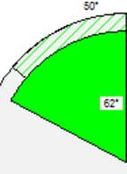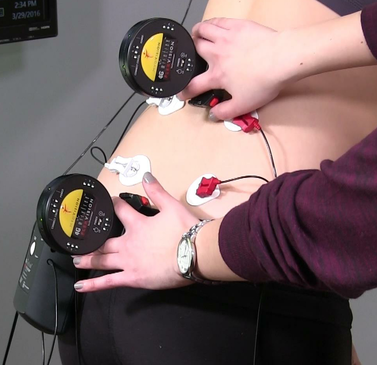What is the difference between traditional ROM and DynaROM?
The brilliance of the DynaROM design is that it's the exact same exam being performed as endpoint ROM, but you are measuring muscular guarding response simultaneously. This means that other than attaching electrodes, the two tests take the exact same amount of time as ROM testing, yet DynaROM pays 5 times more than ROM testing AND you are able to see muscle guarding in response to pain. This can significantly increase sensitivity to soft tissue injury.
With DynaROM, range of motion and muscle guarding are graphed throughout motion using dual inclinometers and attached electrodes, improving sensitivity to pain.
Graphing simultaneous muscle guarding and ROM can prove the presence or absence of soft tissue injury, even when ROM and MRI results are normal.





